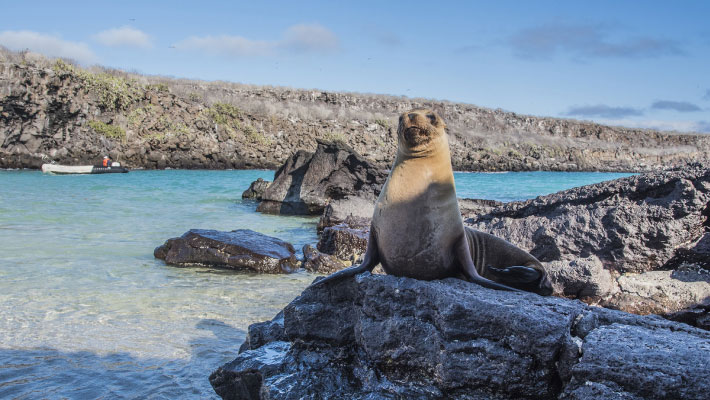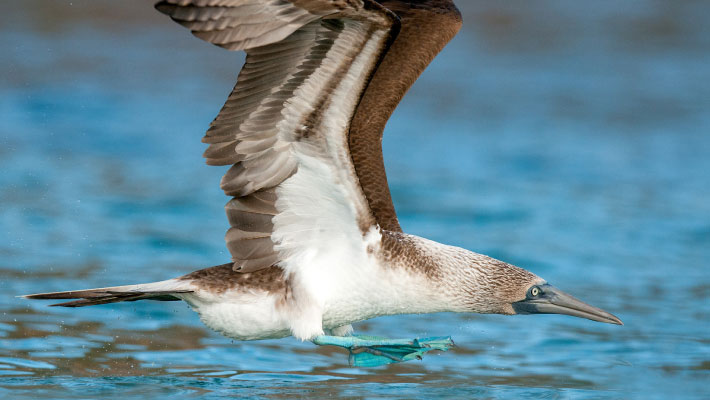
10 Wildlife Photography Tips to Take Pictures Like a Pro
Have you always been fascinated by the beauty of wildlife? Do you enjoy capturing such moments on camera? Wildlife photography is indeed exciting, but it can be quite challenging at the same time. More often than not, it’s best to be prepared before going on your wildlife photography adventure. But don’t worry! In this blog post, we’ll share ten wildlife photography tips to help you capture breathtaking images like a pro.

1. Get to know your subject
Understanding your subject is a fundamental aspect of wildlife photography, as it significantly influences the quality and impact of your images. Wildlife photography is not only about taking a photo but also about telling a story that reflects the essence of the creatures. By getting to know your subject, you learn its habits and movements, which enables you to be ready to capture those one-of-a-kind moments. This knowledge helps photographers position themselves effectively, respecting the animal’s space and safety. Also, insights into your subject’s behavior can lead to a deeper understanding of an ecosystem. The more you know about the wildlife you are photographing and the environment they’re active in, the more you can connect viewers to your subject through images that truly resonate.

2. Look for unique perspectives
Trying different angles is a crucial wildlife photography tip because it can completely transform the image and the narrative being told. To capture the unique wildlife and the diverse landscapes, it’s important to consider looking at things from different angles. While most wildlife images are from eye level, shooting from a low or high angle can add a unique perspective to your images. When photographing wildlife, try taking photos vertically, horizontally, and even slightly tilted!
In the case of capturing the unique characteristics of Galapagos wildlife, consider zooming in on your phone or camera. This will allow you to get close-up shots without disturbing the animals. Doing so allows you to capture a wider variety of the animal’s personality and/or behavior. Whether it’s a giant tortoise munching on leafy greens up in the lush highlands or a bird’s majestic flight, each angle offers a new perspective and can evoke different emotions depending on the angle they’re taken from. This approach to photography allows you to explore your creativity and often offers more dynamic shots.

3. Understand the available lighting
One of the most important elements of wildlife photography is light because it shapes the mood, clarity, and visual impact of a photograph. A well-lit subject is easier to capture, making the details of the image more apparent. The ideal light for wildlife photography is the golden hour—the first and last hours of sunlight during the day. Natural light can vary dramatically, with the sunrise and sunset providing a warm glow that enhances your subject’s features. While the harsh midday light can create strong contrasts and shadows.
Recognizing how different lighting can affect the mood of the photo allows you to choose the most stunning or dramatic moments to capture the incredible species that live in the environment around you. Light can also help highlight textures and colors and add depth to an image. Be sure to use light in different ways to convey a story and/or emotion that can make for an interesting photograph.

4. Patience is key
When mentioning tips for wildlife photography, patience is of the utmost importance. Unlike controlled environments, the wilderness operates on its own schedule, meaning you have to adapt to what’s happening around you. Be ready to wait for the right moment to capture the best shot. Since wildlife is unpredictable, waiting is essential to capturing the perfect image. Patience also allows photographers to blend into the environment, becoming less intrusive and more likely to witness natural scenes.
During these moments of observation, photographers can understand their subjects, being ready to capture spontaneous moments that are often fleeting and impossible to replicate. Waiting also allows us to form a deeper connection with nature, which can lead to a more intuitive sense of knowing when the right time is to take the photo. In essence, patience is key in acquiring a wildlife photograph that tells a captivating story that is true to the life it represents in the frame. And speaking of frames…

5. Keep composition in mind
Composition refers to how you frame and arrange the elements of your image. Keeping composition in mind is an essential tip in wildlife photography, as it not only structures the elements of an image but also helps convey the intended message. It also helps to consider the placement of the wildlife within the frame, making sure there’s a balance between the subject and its environment. The rule of thirds, framing, and negative space are all compositional tools that can add depth and intrigue to wildlife images.
For instance, positioning an animal off-center can create a sense of motion, while using the environment to frame the subject can highlight its prominence. Remember that the rule of thirds divides the image into thirds horizontally and vertically, creating a more balanced and pleasing composition. An effective composition also considers the background and its elements, ensuring they complement rather than distract from the main subject. By thoughtfully arranging these elements, you can make the viewer feel more connected to the wildlife depicted.

6. Be respectful
Being respectful of the environment is especially important when it comes to wildlife photography. It’s important to respect the wildlife and their habitats while photographing. Never disturb them or their habitat, and always follow the rules and regulations of the location you’re shooting in. Keep a safe distance and avoid disturbing the animals. It’s important to prioritize the well-being of wildlife and the preservation of their habitats, while always remembering that the pursuit of a great photo should always come second to the safety of your subject.
This respect involves keeping a safe distance to avoid causing stress or disrupting the animal’s natural habitat, using quiet and slow movements, and following local guidelines and regulations. By doing so, photographers not only contribute to the conservation efforts of the areas they visit but also ensure that future generations can enjoy and photograph these same creatures and places.
7. Shoot at different times of the day
Shooting at different times of day is a technique in wildlife photography that explores the changing lighting, and therefore mood, that’s captured in your image. The light changes throughout the day, dramatically affecting your photo’s atmosphere and feel. Try shooting at different times to capture a variety of looks. Early mornings often present soft light, which can lead to tranquil yet vibrant images. Afternoon and sunset provide the golden hours, which give off a warm light that enhances your shot with a natural glow and shadows that add depth.
Shooting in the harsh light of midday, on the other hand, can create bold images with strong contrasts and vivid details. Furthermore, nocturnal photography opens a hidden realm of wildlife activities, where artificial light or camera technology like night vision can unveil things not seen by the human eye.

8. Capture the moment
Capturing the moment is important for unique instances that sometimes make the most memorable and impactful images. Wildlife photography involves capturing split-second moments. Consequently, it would be best if you were prepared to get that perfect shot anytime by keeping your camera at the ready. Wildlife is dynamic and unpredictable, and the ability to seize the precise moment when an animal exhibits distinct behavior—such as a bird in flight—can make an ordinary photograph truly feel extraordinary.
These key moments often help encapsulate the essence of the subject, too, offering a glimpse into something that might otherwise go unnoticed. Timing is everything! A fraction of a second can mark the difference between capturing a powerful interaction and missing something amazing. By capturing the moment, you can convey the beauty of nature that is as fleeting as it is beautiful. Ultimately, wildlife photography has the ability to freeze time and space, which can inspire appreciation for the natural world.

9. Consider the beautiful surroundings
The Galapagos Islands offer beautiful landscapes that can enhance your wildlife photography. Position yourself in locations where wildlife is known to frequent and use these landscapes to your advantage to create even more dynamic compositions. Doing so conveys not just an isolated portrait of an animal but also its relationship with the ecosystem. By integrating the surrounding scenery, photographers can highlight the grandeur or fragility of different habitats.
This wildlife photography tip invites viewers to consider the balance between the flora and fauna. By considering the landscape, wildlife photographers can create images that are not only stunning but also tell a story of the diverse environments and the incredible wildlife that lives there.

10. Avoid heavy equipment
Last but not least: Avoiding heavy equipment in wildlife photography is important due to hikes, long walks, and even traversing challenging terrain. Lugging around heavy equipment can make you more tired and affect your ability to react to the unpredictable movements of wildlife. Lightweight and compact equipment allows for greater mobility, enabling you to follow the wildlife or explore dense habitats where larger gear would be impractical. Moreover, minimizing equipment helps preserve the peace necessary for capturing animals in their most natural and relaxed stages. Therefore, striking a balance between necessity and portability is crucial for wildlife photographers who aim to produce captivating images while also respecting the ecosystems.

Why the Galapagos islands are the perfect place for wildlife photography
The unique and diverse ecosystems are what make the Galapagos Islands the perfect place for wildlife photography. These islands are home to an extraordinary variety of species, many of which are endemic and unafraid of human presence, offering unparalleled opportunities for close-up shots in natural settings. The variety of landscapes across the archipelago—from pristine beaches to dramatic volcanic views—provides a truly stunning backdrop. Additionally, guided expeditions provide photographers with the chance to learn about and engage with iconic wildlife such as giant tortoises, marine iguanas, and various bird species.
A Unique Photography Experience
Wildlife photography is challenging but immensely rewarding. From understanding your subject and capturing the moment to patiently waiting for the right moment to get the perfect shot, it’s a rather thrilling balance of timing and framing. Most importantly, always respect the flora and fauna! Because it’s not only about taking a good photo but also providing a more immersive experience of the natural world. With its combination of rare wildlife, striking scenery, and specialized tours, the Galapagos Islands truly offers a perfect place for both amateur and professional photographers. With these tips, you can capture stunning wildlife photographs like an absolute pro. So, get your camera ready! Here’s to capturing perfect shots outdoors!

